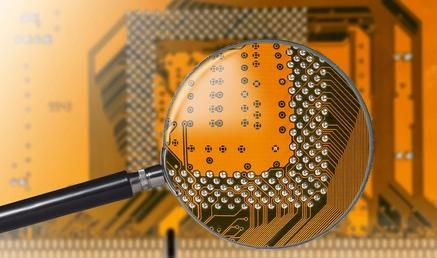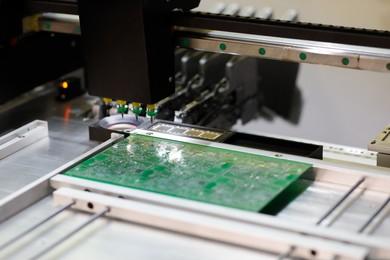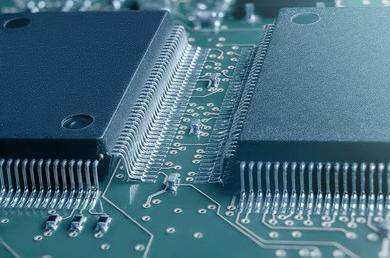Content Menu
● Understanding Surface Mount Assembly
>> Key Components in Thermal Surface Mount Assembly
● Challenges in Thermal Management
>> Thermal Resistance
>> Warpage Issues
● Material Selection Challenges
>> Solder Paste Properties
>> Component Materials
● Assembly Process Challenges
>> Pick-and-Place Accuracy
>> Reflow Profile Optimization
● Reliability Testing Challenges
>> Accelerated Thermal Cycling
>> Failure Analysis
● Conclusion
● FAQ
>> 1. What is surface mount technology (SMT)?
>> 2. What are MicroLeadFrame® packages?
>> 3. Why is thermal management important in SMT?
>> 4. What role does underfill material play in SMT?
>> 5. How does reflow profiling affect SMT quality?
The surface mount assembly (SMA) of Amkor thermal components presents a unique set of challenges that manufacturers must navigate to ensure high-quality production and reliability. As technology advances, the complexity of components and their thermal management requirements increase, necessitating innovative solutions and meticulous processes. This article delves into the various challenges associated with the surface mount assembly of Amkor thermal components, exploring issues related to thermal management, material selection, assembly processes, and reliability testing.

Understanding Surface Mount Assembly
Surface mount assembly is a method where electronic components are mounted directly onto the surface of printed circuit boards (PCBs). This technique offers several advantages, including reduced manufacturing costs, increased assembly speed, and improved circuit performance. In the context of Amkor's thermal surface mount assemblies, specific considerations must be taken into account due to the unique characteristics of the components involved.
Key Components in Thermal Surface Mount Assembly
- MicroLeadFrame® Packages: These are leadless packages that utilize a copper lead frame substrate for electrical contact with the PCB. Their design enhances thermal and electrical performance.
- Ball Grid Array (BGA): A type of surface mount packaging that uses an array of solder balls for connections. BGAs are known for their ability to dissipate heat effectively.
- Thermal Pads: These pads are critical in managing heat dissipation from high-power components. Proper design and implementation are essential to ensure effective thermal management.
Challenges in Thermal Management
One of the primary challenges in Amkor's thermal surface mount assembly is managing heat effectively. As electronic devices become more powerful, they generate significant amounts of heat that must be dissipated to prevent damage and ensure reliability.
Thermal Resistance
Thermal resistance is a crucial factor in the design and assembly of thermal components. High thermal resistance can lead to overheating, which may cause component failure. To mitigate this risk:
- Material Selection: Choosing materials with high thermal conductivity is essential. For instance, using high-thermal conductivity epoxy molding compounds can improve heat dissipation.
- Design Optimization: The layout of thermal pads must be optimized to facilitate efficient heat transfer from the component to the PCB.
Warpage Issues
Warpage during the manufacturing process can significantly affect the performance of surface mount assemblies. Warped PCBs can lead to misalignment during soldering, resulting in poor solder joints and increased failure rates.
- PCB Flatness: Maintaining PCB flatness throughout the assembly process is vital. Variations in flatness can lead to uneven solder paste application and component placement issues.
Material Selection Challenges
The choice of materials used in surface mount assembly directly impacts both performance and reliability. Some common challenges include:
Solder Paste Properties
The properties of solder paste play a critical role in achieving reliable solder joints. Factors such as viscosity, particle size, and flux type can influence solderability.
- Stencil Design: The stencil design must be optimized for both perimeter pads and thermal pads to ensure proper paste coverage. Inadequate paste coverage can lead to weak joints or insufficient heat dissipation.
Component Materials
Different components may have varying thermal expansion coefficients (TECs), leading to stress during temperature fluctuations. This mismatch can cause solder joint fatigue over time.
- Underfill Materials: Selecting appropriate underfill materials that can accommodate differential expansion while providing mechanical support is essential for enhancing reliability.

Assembly Process Challenges
The assembly process itself presents several challenges that require careful consideration:
Pick-and-Place Accuracy
Automated pick-and-place machines are commonly used in surface mount assembly. However, achieving precise placement is crucial for ensuring reliable connections.
- Placement Force Control: The force applied during component placement must be carefully controlled to prevent damage to delicate components while ensuring adequate contact with solder paste.
Reflow Profile Optimization
The reflow process involves heating the solder paste to its melting point and allowing it to solidify around the component leads. Optimizing this profile is critical for achieving strong solder joints.
- Temperature Management: Maintaining appropriate peak temperatures during reflow is necessary to avoid overheating sensitive components while ensuring complete melting of solder paste.
Reliability Testing Challenges
Reliability testing is an essential part of ensuring that assembled products meet performance standards over time. However, several challenges exist:
Accelerated Thermal Cycling
Accelerated thermal cycling tests simulate real-world conditions by subjecting assemblies to rapid temperature changes. This testing helps identify potential failure modes but presents challenges in terms of:
- Test Setup Complexity: Designing test setups that accurately replicate operating conditions while being manageable within laboratory environments can be complex.
Failure Analysis
Identifying the root causes of failures during testing requires sophisticated analysis techniques. This process can be time-consuming and resource-intensive.
Conclusion
The challenges associated with Amkor's thermal surface mount assembly are multifaceted, encompassing aspects from thermal management to material selection and reliability testing. As electronic devices continue to evolve, manufacturers must adapt their processes and technologies to address these challenges effectively. By focusing on optimizing designs, selecting appropriate materials, and refining assembly processes, companies can enhance the reliability and performance of their thermal assemblies.
In summary, addressing these challenges requires a comprehensive approach involving collaboration between design engineers, material scientists, and assembly technicians. Continuous innovation and adherence to best practices will be key in overcoming these hurdles and ensuring successful surface mount assembly outcomes.

FAQ
1. What is surface mount technology (SMT)?
Surface mount technology (SMT) refers to a method where electronic components are directly mounted on the surface of PCBs rather than through holes. This technique allows for more compact designs and faster production times.
2. What are MicroLeadFrame® packages?
MicroLeadFrame® packages are leadless packages designed by Amkor that utilize copper lead frames for electrical connections with PCBs. They offer enhanced electrical performance and improved thermal management capabilities.
3. Why is thermal management important in SMT?
Thermal management is crucial in SMT because excessive heat can damage electronic components or reduce their lifespan. Effective heat dissipation ensures reliable operation under various conditions.
4. What role does underfill material play in SMT?
Underfill materials provide mechanical support between a component and PCB while accommodating differences in thermal expansion coefficients. This helps prevent solder joint fatigue due to temperature variations.
5. How does reflow profiling affect SMT quality?
Reflow profiling affects SMT quality by determining how well solder paste melts and adheres during assembly. Proper temperature control during this process is essential for achieving strong solder joints without damaging components.




















